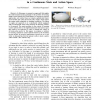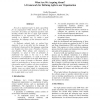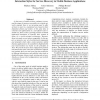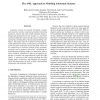1512 search results - page 73 / 303 » Principles of IEEE 802.11s |
IROS
2007
IEEE
14 years 3 months ago
2007
IEEE
— In this paper, we present an approach that applies the reinforcement learning principle to the problem of learning height control policies for aerial blimps. In contrast to pre...
KBSE
2007
IEEE
14 years 3 months ago
2007
IEEE
Growth in the complexity of computing systems, in the dynamism of the environments they operate in, and the need for timely adaptations as conditions change, now pose significant...
AGILEDC
2006
IEEE
14 years 2 months ago
2006
IEEE
How do we implement Agile? Is Agile a good thing for my organization? What barriers will I have to overcome? All of these are important questions when deciding whether and how to ...
DEXAW
2006
IEEE
14 years 2 months ago
2006
IEEE
As the power of mobile devices continues to grow, and the range of resources accessible via wireless networks expands, there is an increasing need to offer services to users in a ...
ICAS
2006
IEEE
14 years 2 months ago
2006
IEEE
Autonomic systems are typically distributed, complex and concurrent systems, comprised of multiple interacting autonomic elements that often exhibit emergent behavior. Design and ...




